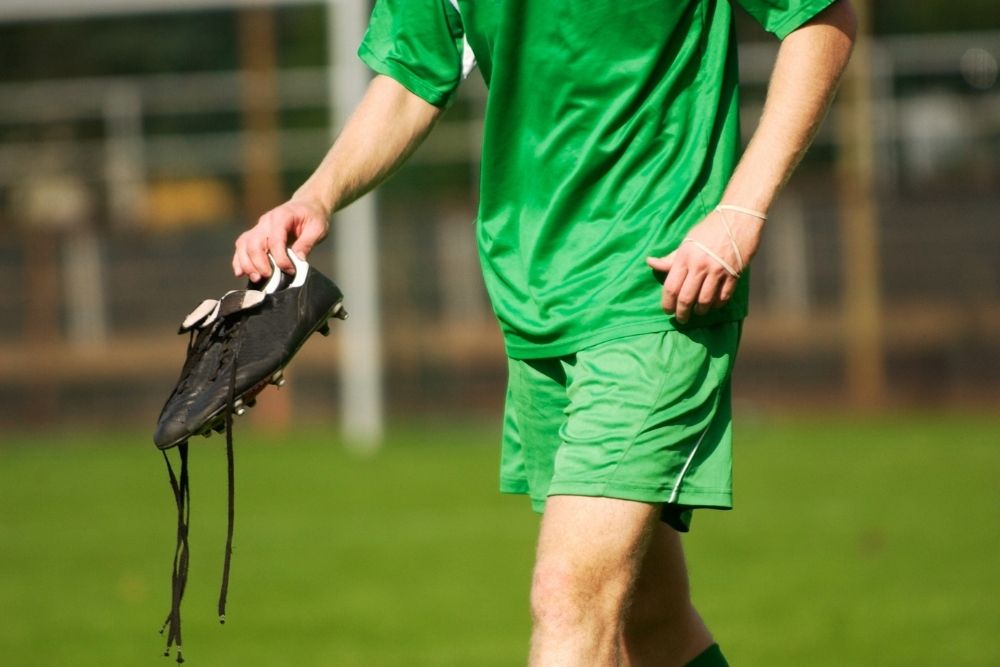Soccer shoes, sometimes referred to as cleats in parts of North America, are the appropriate footwear for soccer players. Soccer shoes designed for grass pitches normally come with studs on their outsole to enhance grip.
Human feet are distinct in shapes and sizes which is why getting the perfectly fitting pair of soccer shoes from a million pairs might seem very difficult most times.
Since soccer shoe designers can’t possibly know exactly how many feet sizes exist in the world, they design shoes based only on specific known sizes.
Every new soccer shoe produced—even though their sizes are boldly stated on them—will need a little bit of adjustment to perfectly fit a player.
New soccer shoes can either be too narrow or too wide, too tight or too loose, which can cause a lot of discomforts, injury, blisters, and inflammation.
Comfortable soccer shoes are essential to any soccer player and every player has their brand, style, and a matching size that suits their position and style of play.
Whether you are jumping, sprinting, kicking, or walking on a soccer pitch, the importance of a soccer shoe with a snug fit can never be overemphasized.
Some soccer players who just bought new soccer shoes might be asking questions like “how can I stretch my soccer shoes?” or “how can I make my soccer shoes bigger?” We will be tackling these issues in this article and other important issues relating to the fitting of soccer shoes.
Quick Navigation
- How to make soccer shoes bigger?
- 1. Wear your soccer shoes casually
- 2. Loosen soccer shoelaces
- 3. Take a shower
- 4. Use a hairdryer
- 5. Dampen soccer shoe with water
- 6. Use a two-way shoe stretcher
- 7. Stuff soccer shoes with soft items
- 8. Using shoe stretch liquid and sprays
- 9. Expand your soccer shoe using frozen water
- 10. Involve a professional cobbler
- Problems caused by ill-fitting shoes and solutions
- Conclusion
How to make soccer shoes bigger?
It may sound common but getting the right-sized soccer shoes is more important than wearing the right-sized soccer jersey. You might be used to the rumors that the legendary Ronaldo wears soccer boots two sizes smaller than the actual size of his feet which isn’t true.
When trying out new soccer shoes, make sure you pick those which are half size up considering that they will be worn with thick football socks.
We all get upset when we finally find the perfect soccer shoe design from several options only to discover that they aren’t the perfect fit for our feet especially when we purchase shoes online.
You shouldn’t simply give up on a chosen soccer shoe if you encounter such a setback because there are many ways you can make them bigger and more fitting.
Sometimes, soccer shoes seem to fit well at the department store where they are purchased but become uncomfortably tight and painful on the feet after a few hours of use. This happens more often than we can imagine but not everybody dares to return these shoes for a swap because they have already been used.
If you can’t return your soccer shoes for a swap especially when they are purchased online, you can follow some quick and effective methods we would be showing you in this article to stretch them out to fit. These techniques are not new but very effective if properly implemented without skipping steps.
Below is a list of ten techniques you can use in making soccer shoes bigger.
1. Wear your soccer shoes casually
Wearing your new soccer shoes on the field alone will delay its expansion. To accelerate the time it will take your foot to properly snug into the shoe, these are the steps you should take.
Step 1: Use your soccer shoes at home after using them on the pitch. Make sure to clean them of dirt before using them.
Step 2: Wear them while going for a casual walk, while shopping, and even while mowing the lawn.
Step 3: Wear your soccer shoes casually with multiple pairs of thick socks—different from the ones you use on the pitch.
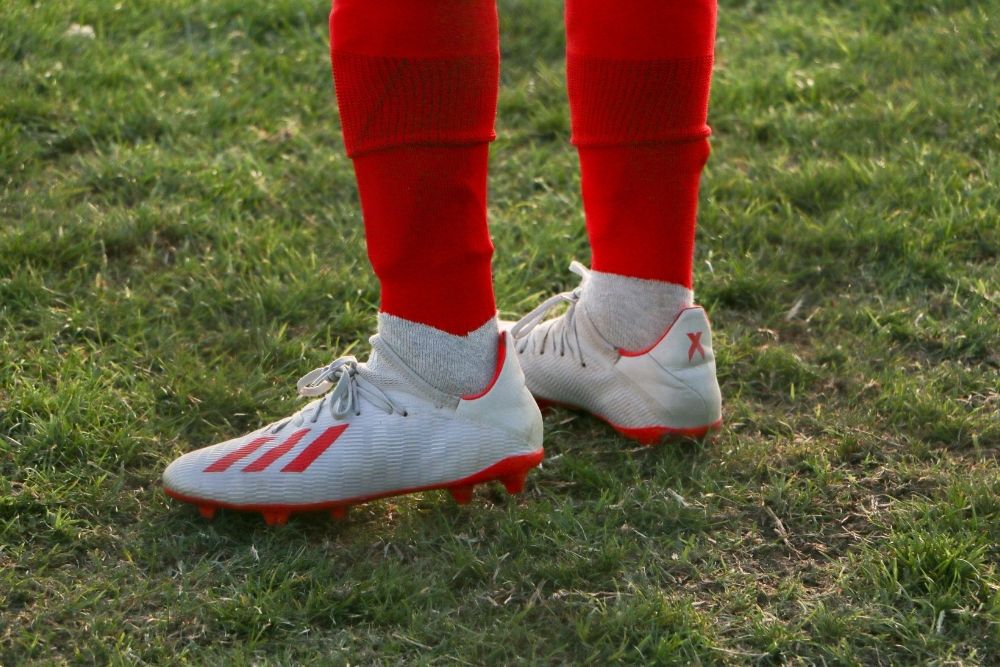
Pros of wearing soccer shoes casually
- Helps you get used to your new soccer shoes
- Hastens the expansion process
- Easy to practice
Cons of wearing soccer shoes casually
- Time-consuming
- Might seem odd at first
2. Loosen soccer shoelaces
This solution, although it appears common, is hardly thought about when we encounter size problems while purchasing new soccer shoes.
Let’s see how it is done:
Step 1: Try fixing your foot completely into the shoe to check how tight it is.
Step 2: Remove your foot from the shoe and loosen the laces completely.
Step 3: When the lace is fully out, wear the unlaced soccer shoe.
Step 4: Try lacing the shoe with your foot in it. Make sure you don’t lace it too tight or too loose and pay close attention to how it feels on your foot while lacing.
Step 5: Test the shoe for 10 minutes after knotting the lace and readjust if the problem persists.
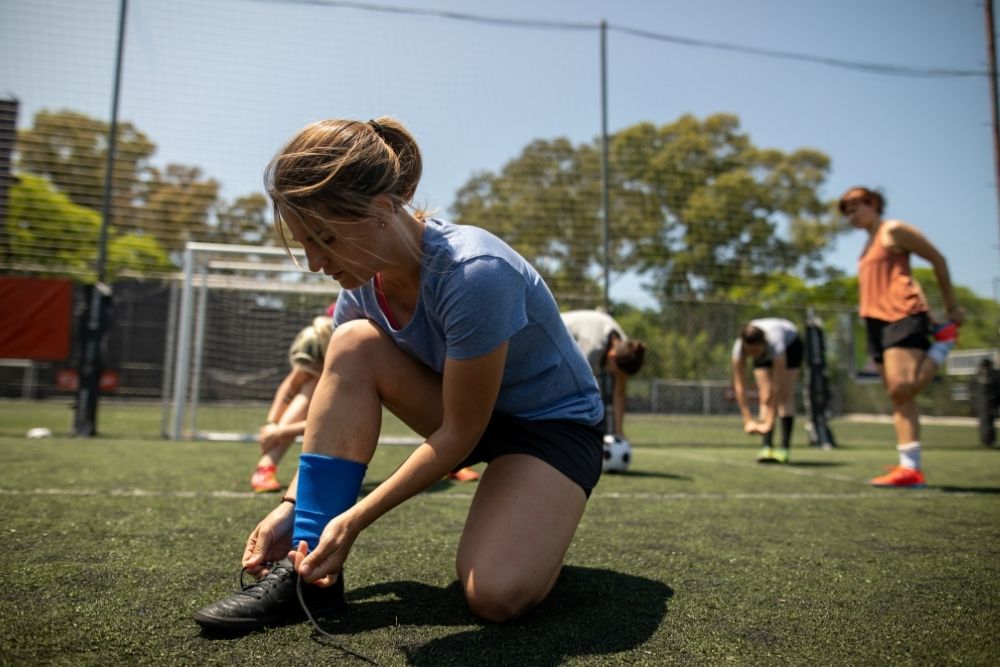
Pros of loosening soccer shoelaces
- Doesn’t need any special skills
- Easy to learn and practice
- A natural way of stretching soccer shoes
Cons of loosening soccer shoelaces
- Time-consuming
- Not very effective
3. Take a shower
This method is highly recommended for leather boots and must be done cautiously. Let’s look at what it involves.
Step 1: Wear your soccer shoe with your socks in the bathroom while you prepare to shower.
Step 2: Use warm water to bathe for a better result.
Step 3: After taking your bath, sit with the wet shoes and allow them to dry on your feet naturally.
Pros of taking a shower with your soccer shoes
- Very effective and easy
- Only requires warm water
Cons of taking a shower with your soccer shoes
- Reduce durability of the soccer shoe
- Can break down the glue on the shoe
- Takes a lot of time
4. Use a hairdryer
Applying heat to your soccer shoes using a hairdryer is an effective way to expand them and make them bigger but there are steps you must take to avoid ruining your soccer shoes. This method works better on leather soccer shoes.
Step 1: Before wearing the soccer shoe you intend to widen, make sure you are wearing a very thick pair of socks. Try wearing two or three thin socks if you can’t find a thick pair.
Step 2: Mark all the spots on the shoe that feel tight.
Step 3: Blow each marked spot with a hairdryer for 20 – 30 seconds. Wiggle your toes and curl your feet inside the shoe as you blow hot air on the shoe.
Step 4: Apply pressure against all the spots you intend to widen using your foot to stretch the material from inside.
Step 5: If any spot refuses to stretch after heating, allow it to cool and apply heat for another 20 – 30 seconds.
Step 6: Avoid blowing hot air on a spot for a long time because it could damage your shoe.
Step 7: Allow your shoe to completely cool down before taking it off. Take off the thick sock and wear the type of socks you normally use with the shoe, if it still feels tight, repeat the process.
Step 8: Get a leather conditioner and gently apply it to the surface of the stretched shoe. This helps in preventing the shoe from cracking and also softens it for easier stretching.
Pros of using a hairdryer in stretching soccer shoes
- A bit faster than other natural means
- Very effective
Cons of using a hairdryer in stretching soccer shoes
- Involves extreme caution and adherence to instructions
- Can ramp up your utility bills
5. Dampen soccer shoe with water
This method might be done a couple of times before results can be seen but it works effectively in situations where the shoe feels awkward or too tight.
Step 1: Use a spray bottle or directly apply lukewarm or tap water on the soccer shoes while still wearing them.
Step 2: Make sure you apply water until the shoes become damp.
Step 3: Stand on your feet and wiggle your toes while waiting for the boots to dry.
Step 4: The boots should either take 30 minutes or an hour to properly dry.
Step 5: Repeat this method a couple of times until the shoes start to feel more comfortable.
Pros of damping soccer shoes with water
- Very easy and effective
- Doesn’t require any special equipment
Cons of damping soccer shoe with water
- Takes a lot of time
- Might be itchy on the feet
- Not a suitable option when the weather is cold
6. Use a two-way shoe stretcher
A two-way shoe stretcher is a simple piece of equipment that can be purchased online or in departmental stores. This product serves the purpose of assisting in widening the length and width of a shoe. Let’s see how the shoe stretcher works.
Step 1: After purchasing the two-way shoe stretcher, carefully read the manufacturer’s manual before putting it to use.
Step 2: Before fitting the equipment into your shoe, make sure to adjust the heel block closer to the toe block as much as possible.
Step 3: Adjust your shoe stretcher to its minimum size before inserting it into your shoe.
Step 4: Slowly turn the widening handle on the stretcher clockwise or anticlockwise based on instructions until you start feeling resistance, turn it a little more, and halt.
Step 5: Allow the shoe stretcher to remain in the shoe for 6 – 8 hours before removing it.
Step 6: Turn the stretcher clockwise or counterclockwise based on instructions to close the toe block. Gently remove the equipment when it feels loose enough in the shoe.
Step 7: If the shoe isn’t wide enough, you can repeat the process.
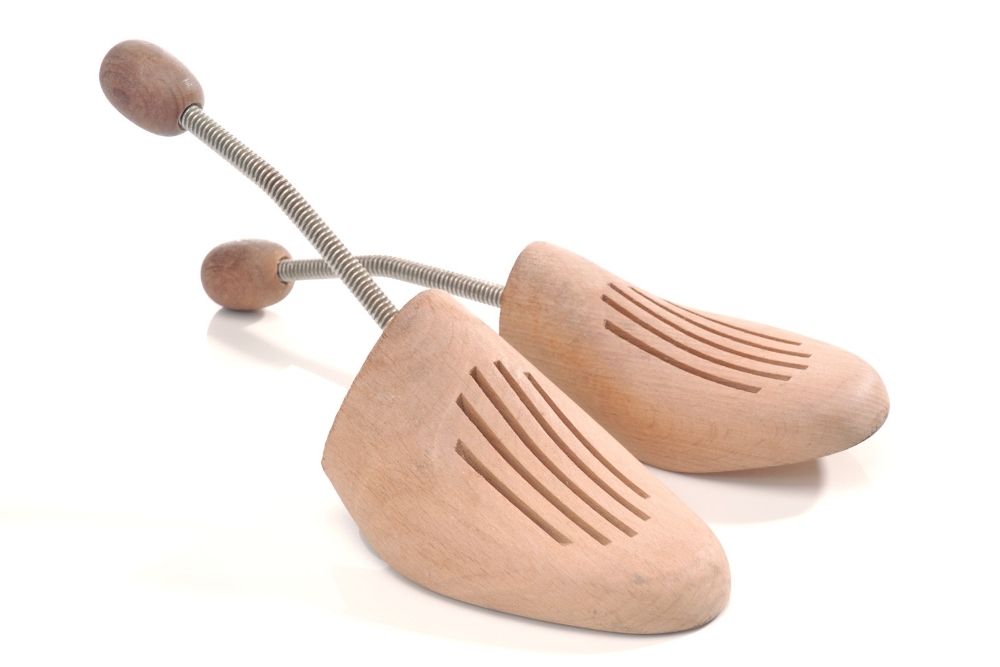
Pros of using a two-way shoe stretcher
- Very easy to use
- Provides sleek and fast results
- Releases the pressure on new boots
Cons of using a two-way shoe stretcher
- Incurs extra expenses
- Shoe stretchers are not always durable
7. Stuff soccer shoes with soft items
This method is suitable if you want to widen the toe area of your soccer shoe. In this method, you stuff your soccer shoes with soft items to help them expand in size.
Things you can use in expanding your soccer shoes are widely available in your home, items such as balls of wrinkled old newspaper, tennis balls, potatoes, and rice grains can be used.
Step 1: Make sure your soccer shoes are dry before inserting things in them.
Step 2: Search around your homes for items that can fit into your soccer shoes without damaging them.
Step 3: Stuff the soccer shoes to the brim with these items and allow them to rest overnight.
Step 4: Properly clean the shoes after removing the stuffed items before checking if they have expanded well enough.
Step 5: Repeat this process until you are satisfied with the new size of your soccer shoes.
Pros of stuffing soccer shoes with soft items
- Very effective
- Easy to do
Cons of stuffing soccer shoes with soft items
- Looks messy
- Leads to paper and material waste
8. Using shoe stretch liquid and sprays
This product works better with adjustable shoe stretchers and they can be purchased both online and in departmental stores. Let’s check out how it works.
Step 1: It may be a smart idea to buy a shoe-stretcher spray for yourself when you purchase a new soccer shoe.
Step 2: Always read the instructions on the spray before applying.
Step 3: Apply the spray slowly to the constricted areas on the shoe and allow it to rest for a minute or two.
Step 4: You can either wear your soccer shoes and walk around in them or use a shoe stretcher to properly stretch the shoes.
- PREMIUM SHOE STRETCHER: FootMatters Professional Shoe Stretch is a leather conditioner that is...
- WONT STAIN OR FADE: Safe and effective. The spray will go on clear and will never cause...
- WORKS ON MULTIPLE MATERIALS: Works on a wide variety of materials, including: Leather, Suede,...
Last update on 2023-11-11 / Affiliate links / Images from Amazon Product Advertising API
Pros of using shoe stretching liquid and sprays
- Easy to apply
- Multiple reviews show it is effective
Cons of using shoe stretching liquid and sprays
- Using this method can tell on your budget
- Continuous use can affect the shoe’s color
9. Expand your soccer shoe using frozen water
It is a known fact that water expands when frozen. This concept can be applied smartly in the course of trying to expand a tight soccer shoe.
Step 1: Purchase 3.8 liters sized resealable or a Ziploc plastic bag. Using your hands, position it in such a way that its property fits into the soccer shoe.
Step 2: Place the plastic bag containing the water into another to avoid any spillage.
Step 3: Slowly fill the plastic bag with water until your shoe is fully occupied then properly seal the bag.
Step 4: Once filled and properly sealed, abandon the shoe in your freezer overnight to properly freeze. When the water becomes ice, it will expand the soccer shoe.
Step 5: Before removing the plastic bag from the shoe, make sure it has defrosted to a point where the bag can easily be taken out of the shoe without getting punctured or torn.
Step 6: Try the shoes on to check how fitting they are, you can repeat the process if you aren’t satisfied with the result.
Pros of expanding soccer shoes using frozen water
- Easy to practice and doesn’t incur expenses
- Very effective
Cons of expanding soccer shoes using frozen water
- The frost can damage the shoe’s exterior
- There is the danger of rupture of the plastic bag leading to spills
10. Involve a professional cobbler
Stretching services are part of the things provided by local shoe repair shops or cobblers. They don’t only repair shoes, they also give you useful tips on how to make your shoes last longer.
Although cobbler shops are phasing out in modern cities, searching for them online might be the best option.
This method doesn’t require steps, all you need to do is to search for the nearest cobbler online, take your shoes to them and pay whatever you negotiate with them and expect your shoes back in 48 hours nicely stretched.
Professional cobblers have specific machines and tools for specific purposes, so they might be your best option due to their expertise and experience with shoes.
Pros of involving professional cobblers
- The risks of getting your shoes damaged are minimal
- Free professional tips on how to maintain soccer shoes
Cons of involving professional cobblers
- More expensive than other methods
- You may experience a delay if the cobbler is too engaged with other clients
Problems caused by ill-fitting shoes and solutions
Ill-fitting shoes can cause serious injuries if used for extended periods. They can make you unstable while walking by causing you to limp or even trip and fall occasionally.
They can cause your toes to deform and your toenails to damage and pull out. Tight soccer shoes can also aggravate bone structure issues and cause cartilage loss in the foot.
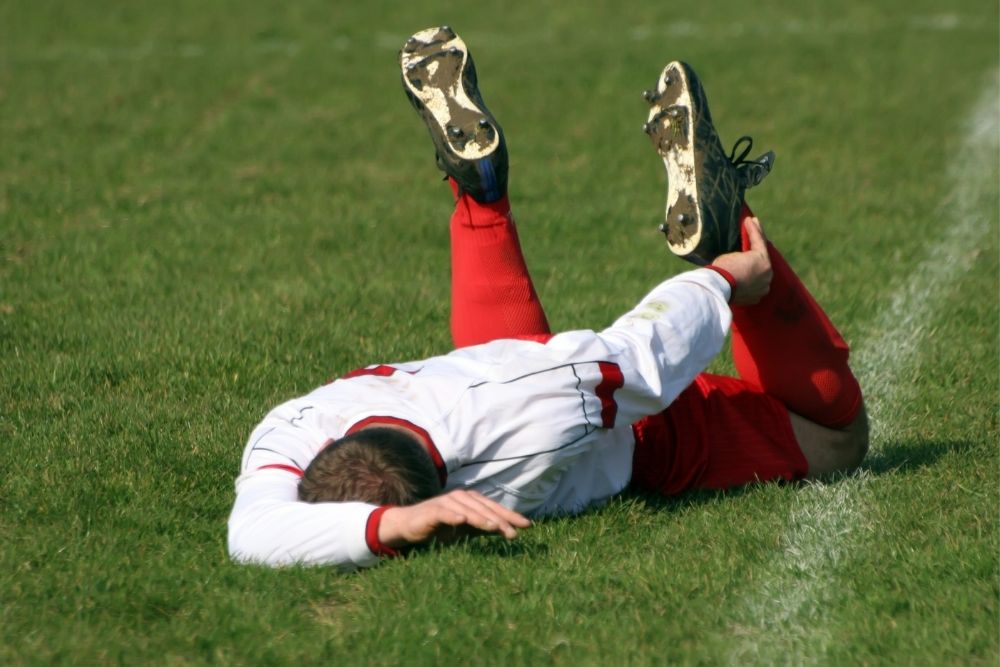
Blisters are also very common with tight soccer shoes due to skin friction. Blisters can be prevented by wearing two pairs of socks to reduce any potential irritation when using new soccer shoes.
Cushioning pads can also be used in reducing skin friction by placing them on pressure areas like the sides of a toe and the heel. Properly fitting shoes will save you from all this stress and bring out the best in you when playing soccer.
Conclusion
Next time you go shopping for new soccer shoes, always buy cleats half size larger than your actual size. Remember to wear your actual soccer socks while testing out the new shoes to prevent making the wrong choice.
Properly fitted shoes can improve your performance, health, and general wellbeing. Rushing a shoe purchase usually leads to mistakes. However, if you still made mistakes even after a slow selection process, our techniques can help you fix your new soccer shoes.
Hi there, I’m Jay.
Soccer is everything in my life! My friends and I have created this blog with all our enthusiasm, passion, and understanding after years of playing pro soccer. Hope you will enjoy it!
